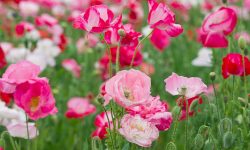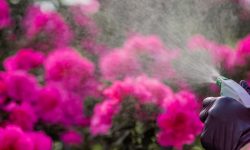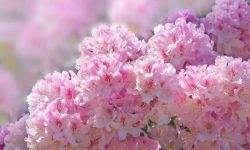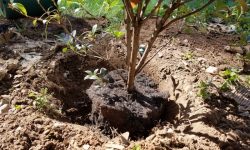Few flowers are as eagerly anticipated in spring as the lilac. With their sweet fragrance and stunning clusters of blooms, lilacs symbolize the return of warmer days and the renewal of nature. But how long do lilacs bloom, and how can you make their flowering period last as long as possible? The answer depends on a mix of factors, including the lilac variety, local climate, care practices, and more.
In this detailed guide, we’ll explore the full blooming timeline of lilacs, from the earliest signs of buds to the final days of flowering. We’ll also cover essential tips to prolong bloom time, encourage healthy growth, and help you enjoy these classic springtime shrubs for years to come.
Understanding the Lilac Bloom Cycle
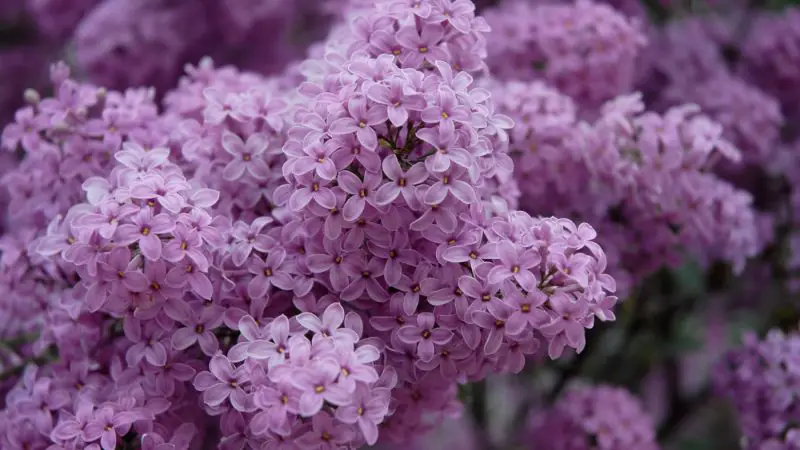
The Dormant Stage in Winter
The dormant stage is not simply a period of inactivity—it’s an essential phase in the lilac’s annual rhythm. While the branches may appear lifeless and bare, beneath the bark, the plant is undergoing quiet biological activity. Hormonal changes slow down cell growth, and energy is redirected toward root maintenance and the protection of pre-formed flower buds. Cold exposure during this time—often referred to as “chilling hours”—is vital. Without sufficient cold, many lilacs will fail to bloom well the following spring. This is why lilacs tend to perform best in USDA Zones 3 to 7, where winters are reliably cold enough to support strong bud development.
Bud Formation in Early Spring
As daylight increases and soil begins to warm, lilacs awaken gradually. The buds formed during the previous season begin to swell, drawing on carbohydrates stored in the woody stems and roots. These buds are pre-determined to become either leaves or flowers. For flower buds, consistent daytime warmth helps promote uniform development. It’s important during this stage to avoid applying high-nitrogen fertilizer, which can stimulate excessive leafy growth at the expense of flowers. A balanced, low-nitrogen blend applied in late fall or very early spring is better for encouraging blooming.
Additionally, this is the time to monitor for pests such as scale or fungal infections that may have overwintered on branches. Treating early ensures buds aren’t compromised before they open.
Peak Bloom Time by Region and Variety
Peak bloom timing is a combination of genetics and environmental cues. Southern gardeners may see lilacs bloom as early as late March, especially with early-blooming hybrids like Syringa oblata or Syringa x hyacinthiflora. In contrast, northern gardeners may wait until mid or even late May for blooms to appear. Some cultivars, such as ‘Betsy Ross’ or ‘Miss Kim’, are specially bred to bloom slightly later or to thrive in warmer climates, which gives gardeners more flexibility in extending the bloom season. Microclimates within your yard—such as sunny southern exposures or wind-protected spots—can also affect when blooms appear.
If you’re planting new lilacs, consider selecting early, midseason, and late varieties. When combined strategically, they can offer continuous color for up to 6 weeks in ideal conditions.
Duration of Individual Blooms
Once open, lilac blossoms are highly fragrant and visually striking, but their lifespan is relatively short. Under average spring weather, each panicle—those cone-shaped flower clusters—lasts about 10 to 14 days. Cool, dry weather will help extend this bloom time, while sudden heat spikes, spring storms, or inadequate watering can cause premature fading or petal drop.
To keep blooms looking their best during this window, regular deadheading can be helpful, especially for repeat-blooming varieties like ‘Bloomerang’. Removing spent flowers immediately after they fade helps direct energy back into the plant and prevents unnecessary seed development. Keep in mind that this does not typically trigger a second bloom in traditional lilacs, but it does improve plant vigor.
In addition to deadheading, make sure the plant is adequately watered during the bloom period, especially in dry springs. Mulching around the base helps conserve soil moisture and keeps roots cool—both of which support sustained flower health.
Bloom Duration by Variety
Common Lilac (Syringa vulgaris)
Common lilacs are beloved for their classic appearance and nostalgic scent. These shrubs typically begin blooming in mid to late spring, depending on local climate conditions. The bloom period generally lasts from 14 to 21 days, with cooler spring temperatures helping to prolong flower longevity. To maximize bloom duration, it’s important to site the shrub in full sun, ensure good air circulation, and avoid overhead watering during bloom. Proper pruning immediately after flowering will also encourage robust bloom cycles in subsequent years. Common lilacs come in a wide palette of colors—from deep violet and lavender to soft pink and crisp white—which can affect the perceived vibrancy and duration of blooms.
Dwarf Korean Lilac (Syringa meyeri ‘Palibin’)
The Dwarf Korean Lilac is a compact, slow-growing variety that thrives in both garden beds and containers. Its bloom period typically begins in May and lasts approximately two to three weeks under favorable conditions. This cultivar is especially valued for its profuse clusters of small, lavender-pink flowers and rich, sweet fragrance. Unlike some taller varieties, ‘Palibin’ maintains a neat, rounded shape without aggressive pruning, making it ideal for smaller landscapes. With proper moisture and mulching to keep roots cool, the blooms can last slightly longer, even in warmer zones. Deadheading spent blooms may also enhance the plant’s appearance and energy allocation for future flowering.
Bloomerang Lilac
Bloomerang Lilacs are a relatively new addition to the Syringa family, bred specifically for their ability to bloom more than once in a single growing season. The first wave of flowers appears in spring, typically in April or May, depending on the region. This initial flush lasts about two to three weeks. After a short resting period, the shrub produces a second, lighter round of blooms in late summer or early fall. These reblooming shrubs prefer full sun and consistent watering during dry spells to support both bloom cycles. Although the second bloom is often less intense than the first, careful feeding after the spring flush can help improve flower quantity and quality later in the season. Pruning right after the first bloom encourages better performance during the reblooming period.
Factors That Affect Bloom Longevity
Temperature and Climate
Lilac blooms last longer in cool, stable spring weather. Mild temperatures help the flowers open gradually and stay vibrant for up to three weeks. However, unexpected heatwaves can speed up the blooming process and cause the petals to wilt or drop prematurely. Sudden spikes in temperature, especially those above 80°F (27°C), often shorten the bloom period significantly. Late spring frosts pose another risk, particularly if buds have already formed, as frost can damage or kill them before they even open. Strong winds and heavy rainfall can also cause physical damage to the delicate flower clusters, leading to bruising or early petal loss, especially on fully open blooms.
Sunlight Exposure
Adequate sunlight is essential for both flower production and bloom longevity. Lilacs need at least six hours of full sun each day to develop large, healthy flower clusters. In locations with partial shade, especially those shaded in the morning or afternoon, lilacs may bloom sparsely and their flowers may not last as long. Full sun exposure encourages stronger growth, better air circulation, and more resilient flower structures that are less prone to fungal issues. When lilacs receive consistent, intense sunlight during the growing season, they produce more buds, and those buds often bloom for a longer period with more vivid color.
Soil Quality and Moisture
Healthy soil conditions directly support long-lasting lilac blooms. Lilacs grow best in well-drained soils that are neutral to slightly alkaline in pH. When the soil drains poorly, water can accumulate around the roots, leading to stress and root rot, which affects overall plant health and bloom quality. On the other hand, extremely dry soil can also shorten bloom duration. If lilacs are stressed by drought conditions during bud development or flowering, they may produce smaller, less vibrant flowers that fade quickly. Maintaining consistent soil moisture—especially during dry spells in spring—helps lilacs stay hydrated and supports an extended blooming period. Applying mulch around the base of the shrub can help regulate moisture and temperature while reducing weed competition.
Pruning Practices
Proper pruning directly influences both the quantity and the lifespan of lilac blooms. Pruning immediately after the blooming period allows the plant to redirect energy into developing strong buds for the following year. This timing is critical because lilacs form their flower buds in summer, and any cuts made too late—especially in late summer or fall—can remove those future blooms. When pruned correctly, lilacs have better air circulation within the canopy, which helps reduce the risk of mildew and other fungal diseases that can damage flower quality. Pruning also promotes healthier stems and encourages new growth, which often supports longer-lasting and more abundant blooms. Removing dead wood, crossed branches, and spent flower heads right after blooming ensures that the plant stays vigorous and productive year after year.
How to Maximize Bloom Time
Watering at Key Stages
Proper watering plays a crucial role in maximizing the bloom time of lilacs. During early to mid-spring, when flower buds are forming and beginning to open, consistent soil moisture is essential. If the weather turns dry during this period, deep watering once or twice a week helps the plant maintain healthy blooms. Mulching around the base of the lilac with organic material like bark or compost keeps the soil evenly moist, insulates the root zone against temperature fluctuations, and reduces weed competition. Maintaining even moisture—not soggy conditions—ensures that flowers open fully and remain vibrant for a longer period. Lack of water during the budding phase can cause flowers to dry prematurely and shorten the overall blooming window.
Fertilizing Effectively
Lilacs do not require heavy feeding, but the right type and timing of fertilizer can significantly improve flower production and bloom duration. In early spring, apply a low-nitrogen, balanced fertilizer or one higher in phosphorus to encourage strong bud development and fuller flower clusters. Overfeeding with nitrogen-rich products promotes lush leaf growth at the expense of blooms and may even delay flowering. Use a slow-release formula or organic option such as composted manure to feed the plant gradually throughout the early growing season. Avoid fertilizing after mid-summer, as this can stimulate new growth that won’t have time to harden before winter, weakening the plant and reducing next year’s blooms.
Deadheading Faded Blooms
While deadheading lilacs won’t encourage additional blooms in the same season, it remains an important part of bloom longevity management. Removing spent flowers promptly prevents the plant from diverting energy into seed formation, allowing it to focus instead on strengthening roots and stems. This redirected energy supports healthier growth and better flower bud development for the following spring. To deadhead correctly, clip off the faded flower cluster just above the first set of leaves without damaging the surrounding new growth. Although optional for casual gardeners, regular deadheading can be especially beneficial for young or struggling plants, contributing to better long-term flowering performance.
Avoiding Stressors
Minimizing environmental and biological stress is essential to help lilacs reach their full blooming potential. Stress factors like fungal diseases, insect infestations, drought, or compacted soil conditions can reduce both the quantity and duration of blooms. A lilac under stress may produce fewer flower buds and exhibit quicker flower drop. Ensure the plant receives full sunlight and has good air circulation to prevent powdery mildew, a common lilac issue. Check for signs of borers, scale, or aphids, and treat early with non-toxic methods when possible. Also, avoid mechanical stress, such as mowing too close to the base or disturbing roots with heavy foot traffic. Healthy, well-cared-for lilacs will not only bloom more prolifically but also maintain their flowers for a longer period.
Regional Blooming Differences
Northern Climates
In the colder northern zones, such as USDA zones 3 through 5, lilacs typically reach peak bloom from late May into early June. The bloom period often lasts longer than in warmer areas because of the consistently cool spring weather. These cooler temperatures help slow the aging of the flowers, allowing gardeners to enjoy their fragrance and color for up to four weeks in some cases. Frost damage is still a risk if a late freeze occurs, especially after buds have begun to swell, so protecting vulnerable plants in early spring may help preserve the bloom. Varieties suited to northern climates often bloom more reliably when winter chilling requirements are fully met, which is common in these zones.
Midwestern and Northeast U.S.
In much of the Midwest and the Northeastern United States, lilacs are considered spring garden staples. Most varieties begin blooming in mid to late May, although exact timing can shift depending on yearly weather patterns. When spring arrives gradually with moderate temperatures, lilac flowers can last around three weeks. Extended bloom periods in these regions depend heavily on avoiding late frosts and sudden spikes in heat. Gardeners in these areas often enjoy a full progression of early-, mid-, and late-season lilacs if multiple cultivars are planted together, allowing for a staggered display that may stretch well into early June.
Southern Climates
In the southern U.S., particularly zones 7 and warmer, lilacs tend to bloom earlier in the season—sometimes as early as late March or the beginning of April. However, high spring temperatures and sudden warm spells can cause the flowers to open and fade within a much shorter timeframe. Lilacs in the South often finish blooming in less than two weeks. Additionally, many traditional lilac varieties struggle in warmer climates due to insufficient winter chilling. Gardeners in southern regions often opt for heat-tolerant cultivars such as Syringa × hyacinthiflora or ‘Blue Skies,’ which can handle shorter winters and early springs while still producing a satisfying flush of flowers.
Pacific Northwest
In the Pacific Northwest, the climate is generally mild and damp, with cooler springs that can prolong bloom duration. Lilacs in this region often begin blooming in early to mid-May, depending on elevation and proximity to the coast. The combination of cool air and abundant moisture may allow some varieties to bloom into June, especially those that flower later in the season or have a second flush, such as reblooming lilacs. The consistent humidity in the region helps prevent blooms from drying out prematurely, although too much rain can occasionally damage petals. Gardeners in this region often enjoy a longer blooming timeline overall, especially when selecting a mix of early, midseason, and late-blooming varieties.
Caring for Lilacs During Bloom Season
To help your lilacs bloom beautifully and hold their flowers longer, proper care during the blooming season is essential. Water deeply during dry periods, especially if your lilac is newly planted or growing in sandy soil. However, avoid overwatering, as soggy soil can damage roots and reduce flowering. Applying mulch helps retain moisture and suppresses weeds that compete with your lilac for nutrients.
Fertilization during bloom is not usually necessary unless your soil is nutrient-deficient. Excess nitrogen can result in lush foliage at the expense of flowers. Use a low-nitrogen, phosphorus-rich fertilizer in early spring to support bud formation, and avoid feeding later in the season. Regularly remove dead or faded flowers, if practical, to keep the plant looking tidy and potentially stimulate more blooms in reblooming varieties.
Inspect regularly for pests such as scale insects or borers, and treat promptly to prevent damage. Keeping your lilac bush clean, pruned, and disease-free ensures not only longer bloom duration but also a healthier plant that continues to flower for years to come.
Troubleshooting Short Bloom Periods
Poor Blooming Year After Year
When lilacs fail to bloom consistently, it often stems from a few key issues. One of the most common is inadequate sunlight. Lilacs need at least six hours of full sun each day to set and maintain healthy flower buds. Another frequent cause is improper pruning. Cutting back lilacs at the wrong time—especially late in the season—can remove the following year’s buds entirely. Soil fertility also plays a major role. While lilacs don’t require heavy feeding, soils with too much nitrogen promote leaf growth at the expense of blooms. Older plants may also become woody and less productive if they haven’t been rejuvenated. Evaluate your lilac’s growing conditions, care history, and overall age to identify what may be limiting flower production.
Bud Damage from Frost
Late-season frosts can be devastating to lilac buds, particularly after they begin to swell or open. A stretch of unseasonable warmth in early spring may cause premature budding, leaving those developing blooms vulnerable when temperatures drop again. Frost-damaged buds may turn brown, appear shriveled, or fail to open at all. In areas with unpredictable spring weather, consider planting lilacs in slightly sheltered locations near buildings or fences for added warmth and protection. Covering shrubs with light frost cloths during cold snaps can also help preserve fragile buds.
Overcrowding and Air Circulation
Lilacs that are planted too close together or left unpruned for many years often suffer from poor air circulation. This encourages the development of powdery mildew, a common fungal disease that weakens leaves and stems, indirectly affecting the plant’s ability to support strong flowering. Dense canopies also block light from reaching inner branches, further limiting bloom production. To avoid these issues, prune your lilac annually after flowering to remove older stems and open up the center. If necessary, transplant suckers or divide the plant to provide better spacing. Improving airflow not only reduces disease pressure but also promotes longer-lasting, healthier blooms.
When to Expect First Blooms After Planting
Lilacs are known for their patience, often taking time to establish before rewarding you with their signature fragrant blooms. Most newly planted lilacs won’t flower during the first or even second year. This delay is completely normal and often reflects the plant’s focus on developing a strong root system. On average, gardeners can expect the first blooms to appear about three to five years after planting, especially when grown from small nursery stock or bare-root plants. Larger container-grown shrubs may flower a little earlier, but even then, blooms during the first year are rare. Soil quality, sunlight exposure, and planting depth all influence how quickly lilacs reach maturity. Poor soil drainage, shade, or competition from nearby trees may extend the waiting period. To encourage earlier blooming, plant lilacs in full sun, amend the soil with compost before planting, and avoid excessive nitrogen fertilizers. While the wait can test a gardener’s patience, healthy lilacs that are properly cared for will eventually bloom year after year with increasing abundance.
How Long Each Bloom Stage Lasts
Bud Swell to Opening
This stage marks the beginning of the lilac bloom cycle. It usually lasts one to two weeks, though cool spring temperatures can stretch it longer. During this time, buds gradually enlarge and begin to show hints of color. Cloudy, mild days help extend this period. Quick warm-ups or sudden heat waves can shorten it, sometimes causing buds to open almost overnight. Gardeners often find this stage exciting as it signals that blooming is close.
Full Bloom
Once the flowers open, lilacs typically stay in full bloom for 10 to 14 days. This is the most fragrant and colorful phase. Each flower cluster opens gradually from bottom to top, often giving the illusion of a longer bloom. The weather plays a key role—mild days and cool nights preserve blooms, while hot or windy conditions can shorten the show. A lack of rain or too much sun may also cause flowers to fade faster.
Fading and Decline
After their peak, lilac blooms begin to lose color and fragrance. This final phase usually lasts three to five days. Flowers dry up and petals drop more quickly in heat or dry weather. Some gardeners deadhead spent blooms to improve the shrub’s appearance and reduce energy spent on seed production. Though the bloom show ends, this phase is also a good time to plan for pruning or fertilizing, preparing the plant for future flowering.
Reblooming Varieties: What to Expect
Reblooming lilacs, such as Syringa Bloomerang, offer more than the traditional single spring bloom. After their initial flush in mid to late spring, these varieties rest briefly, then start blooming again in midsummer. Depending on the climate and care, a second and even a third wave of flowers may appear. These repeat blooms are often lighter in color and less profuse than the first, but still add fragrance and beauty throughout the season.
To encourage reblooming, consistent deadheading is essential. Removing faded flower heads prevents seed development and signals the plant to produce more buds. Regular watering, especially during dry periods, supports energy reserves for additional flowering. Fertilizing lightly after the first bloom can also promote reblooming, though excessive nitrogen should be avoided.
Reblooming performance varies with region. In cooler northern climates, plants may produce only one additional bloom. In warmer zones, with longer growing seasons, some lilacs rebloom more reliably. Full sun exposure remains critical—at least six hours daily—to trigger rebloom cycles. While reblooming lilacs require more care than traditional types, they reward gardeners with extended color and scent well into fall.
Long-Term Tips to Keep Lilacs Blooming Beautifully
To ensure your lilacs continue to bloom profusely every year, a few long-term care strategies are essential. First, maintain consistent pruning practices. Remove old wood every few years to promote air circulation and rejuvenate the plant. Avoid cutting back too aggressively or pruning in fall or winter, as this removes the buds for the following spring.
Ensure your lilacs receive at least six hours of direct sunlight daily. Shade will significantly reduce bloom quantity and quality. Monitor soil pH periodically; lilacs prefer slightly alkaline soil. Adding lime occasionally can help maintain the right balance if your soil tends to be acidic. Mulch annually with compost or well-rotted manure to boost soil structure and nutrient content.
Avoid over-fertilizing, especially with high-nitrogen products, which encourage leafy growth at the expense of flowers. Choose slow-release or organic options instead. Finally, consider companion planting with early or late blooming perennials to ensure continuous garden interest before and after lilac season. With thoughtful planning and regular care, your lilacs will continue to bloom beautifully for decades.
Frequently Asked Questions About When Lilacs Bloom
Why didn’t my lilac bloom this year even though it looks healthy?
A lilac may skip blooming even if the foliage looks vibrant. Common reasons include lack of sunlight, overfertilizing with nitrogen, or pruning at the wrong time. Late spring frosts can also kill flower buds. In some cases, the plant is simply too young and needs more seasons to mature.
How long does it take for a newly planted lilac to bloom?
Lilacs generally take three to five years after planting to start blooming, especially if grown from small nursery stock. A larger potted shrub may flower sooner. Blooming time also depends on care—plants in full sun with well-drained soil and proper watering will reach flowering age faster.
How long do lilac blooms typically last once they open?
The bloom period usually lasts between 10 to 14 days. This can be extended by cool temperatures and dry weather. Heat, rain, and wind can shorten bloom life, sometimes to just a few days. Once petals begin to fade, the decline is quick unless blooms are removed promptly.
Are there lilac varieties that bloom more than once per year?
Yes, some lilacs like the Bloomerang series are rebloomers. They offer a spring display followed by a second, lighter bloom in midsummer to early fall. While not as dramatic as the spring show, the secondary blooms add seasonal interest. Good care is essential to encourage this second flush.
Can pruning lilacs affect blooming time or success?
Timing is everything when it comes to pruning lilacs. If pruned too late—after buds have formed in summer—you may remove next year’s flowers. The ideal pruning time is just after the spring bloom ends. Annual light pruning also encourages airflow and sunlight, improving overall bloom quality.
Conclusion
Lilacs may only bloom for a few weeks each year, but with thoughtful care and strategic planting, you can stretch their season and savor their beauty even longer. From choosing the right variety to optimizing soil, sunlight, and pruning practices, every detail helps maximize your lilac’s flowering potential. With these tips, you’ll enjoy not just a brief floral moment, but a fragrant spring tradition that returns stronger each year.

